This is an AI translated post.
History and Travel Information of Gyeongbokgung Palace, the Landmark of Seoul
- Writing language: Korean
- •
-
Base country: All countries
- •
- Travel
Select Language
Summarized by durumis AI
- Gyeongbokgung Palace was built in 1395 as the main royal palace of the Joseon Dynasty, built to reflect Confucianism, and now stands as a symbolic cultural heritage of Seoul.
- After being destroyed by the Japanese invasion in 1592, it remained in ruins for 270 years, but was rebuilt in the 19th century and includes buildings such as Geoncheongjeon Hall, Sajeongjeon Hall, Gyeonghoeru Pavilion, and the National Palace Museum.
- Gyeongbokgung Palace is a place where you can experience Korean traditional culture, especially if you visit wearing Hanbok, admission is free, and you can feel the atmosphere of the Joseon Dynasty in the 19th century.
Gyeongbokgung Palace is the royal palace of the Joseon Dynasty (1392-1910) located in the heart of Korea. It served as the Joseon Dynasty's main palace (the first palace) for a long time, and today it remains a symbolic cultural heritage of Seoul and Korea.
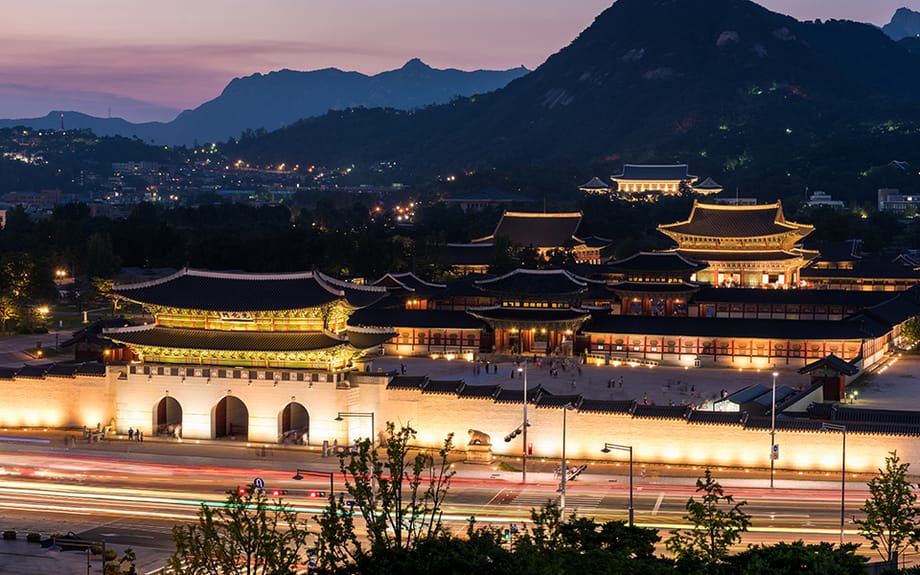
Overall view of Gyeongbokgung Palace
Gyeongbokgung Palace was built in 1395. Yi Seong-gye, who overthrew the Goryeo Dynasty and founded Joseon, stayed in Kaesong, the capital of the Goryeo Dynasty, for three years. However, Kaesong was too small and suffered from serious housing and sanitation problems. Moreover, the palace in Kaesong, Suchanggung, was built by the Goryeo Dynasty and did not fit the ideal form of a palace in a Confucian state.
Yi Seong-gye and his close aide Jeong Do-jeon built a new palace in Seoul and moved the capital. “Gyeongbokgung” is a name given by Jeong Do-jeon, using an expression from the Confucian classic “Shijing,” meaning a palace overflowing with blessings. Gyeongbokgung was built based on the ideology of a Confucian state. It was built under the principle of “being modest but not shabby.” Therefore, in 1395, it was quite small, but its size gradually expanded over hundreds of years.

Roof tiles of Gyeongbokgung Palace in the 14th century. The roof of Gyeongbokgung Palace, when it was first built, was blue, unlike today.
The palace was destroyed in 1592. It is believed that Gyeongbokgung burned down during the retreat of the Japanese Toyotomi shogunate after they occupied Seoul. The palace remained in ruins for 270 years, but was rebuilt in the 19th century. However, the construction was rushed to reestablish the authority of the royal family, and the architectural style is from the late 19th century, not the 14th century. (The 19th-century version of Gyeongbokgung was built more recently than the London Underground.)
Therefore, among the remaining Joseon palaces, Gyeongbokgung has the lowest value as a cultural property. However, it remains a symbol of Seoul because of its symbolic status as the Joseon Dynasty's main palace and its status as the most accessible ancient building in Seoul. In particular, Gyeongbokgung is known as a must-see for foreign tourists visiting Korea, and is a great place to experience traditional Korean culture.
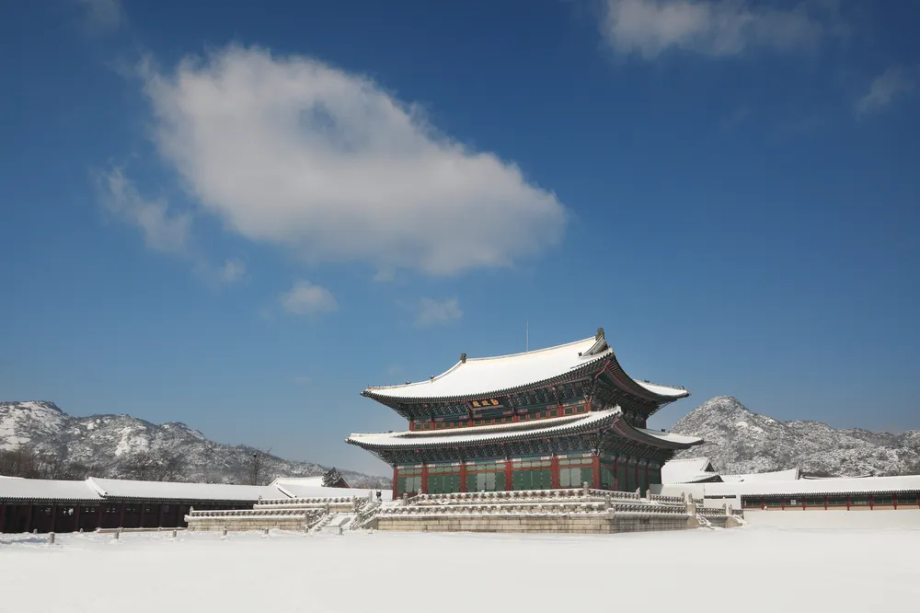
Geoncheongjeon Hall of Gyeongbokgung Palace
Visiting Gyeongbokgung Palace
Gyeongbokgung Palace consists of hundreds of buildings. Among them, Geunjeongjeon, Sajeongjeon, and Gyeonghoeru are the most representative. Geunjeongjeon is the central building of Gyeongbokgung Palace and was where official royal and court events were held.

Inside Sajeongjeon Hall of Gyeongbokgung Palace. It was the office of the Joseon king.
Sajeongjeon was a building used as a kind of office where the king worked. In Korean TV dramas, most scenes of the king and his ministers talking are set in this building.
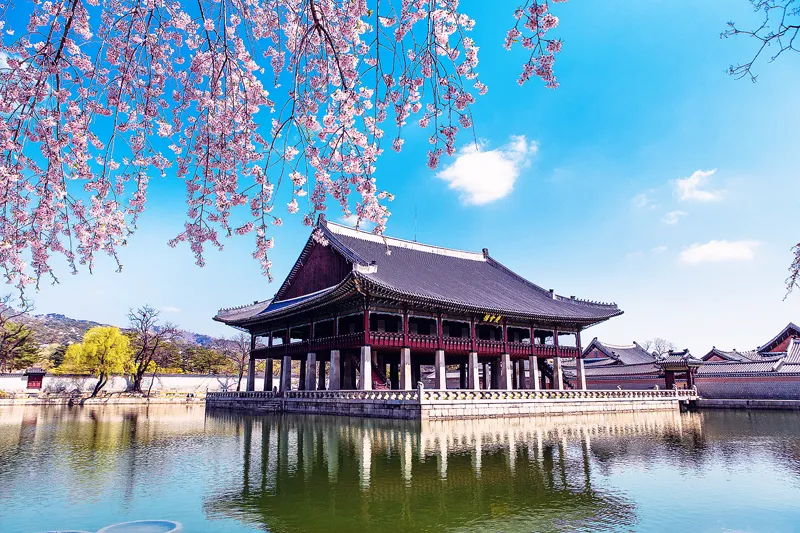
Gyeonghoeru Pavilion of Gyeongbokgung Palace
Gyeonghoeru is a building built on a pond, and it was used for feasts for the king and foreign envoys. In the past, Gyeonghoeru was considered a major landmark of Seoul, and Chinese envoys visiting Joseon considered it a must-see.
Wearing traditional clothing
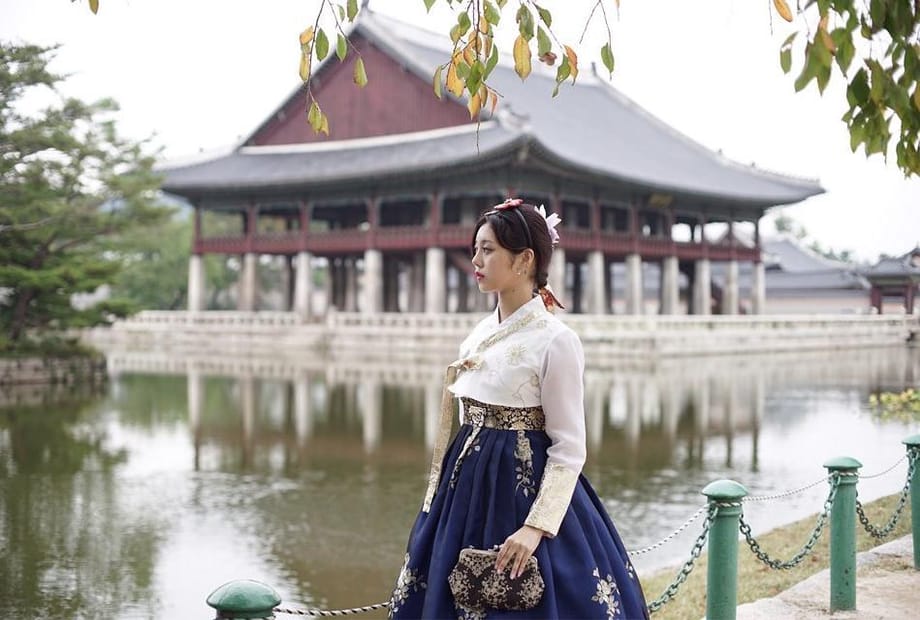
Reference photo of 'Hanbok Plus' Hanbok rental shop
Near Gyeongbokgung Palace, there are many shops that rent out hanbok, Korea's traditional clothing. If you rent hanbok and visit Gyeongbokgung Palace, the entrance fee is free. Inside Gyeongbokgung Palace, modern buildings are not easily visible, making it a good place to match hanbok. Wearing hanbok, you can create photos that make it look like you've traveled back in time to 19th-century Joseon.
National Palace Museum of Korea
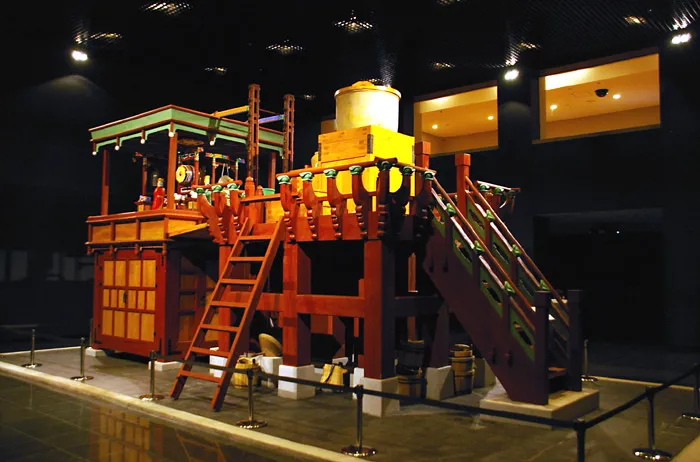
Jageuru (water clock) of the National Palace Museum
The National Palace Museum of Korea is located inside Gyeongbokgung Palace. It exhibits items and clothing used in Gyeongbokgung Palace. In particular, at this museum, the “Jagyeoru,” a water clock invented in the mid-15th century, tells the time. If you check the Jagyeoru schedule, you can see wooden dolls moving automatically and striking bells.
Admission fees and operating hours
Gyeongbokgung Palace is open from 9:00 AM to 6:00 PM. However, admission is only possible until 5:00 PM, so keep this in mind when visiting. The admission fee is 3,000 won for adults, 1,500 won for teenagers, and 800 won for children. Admission is free if you wear hanbok. You can easily get there by getting off at Gwanghwamun Station on Seoul Subway Line 5 or Gyeongbokgung Station on Line 3.









